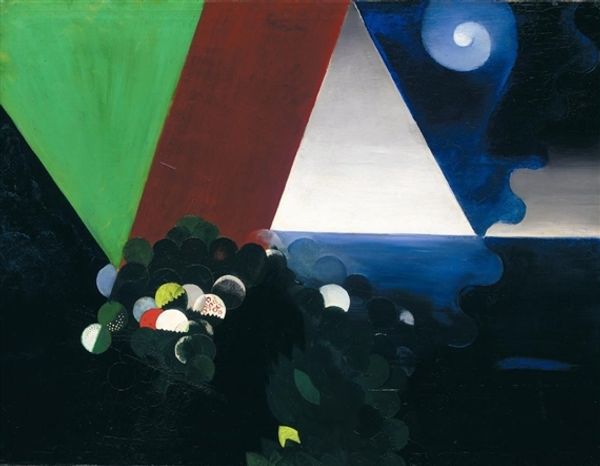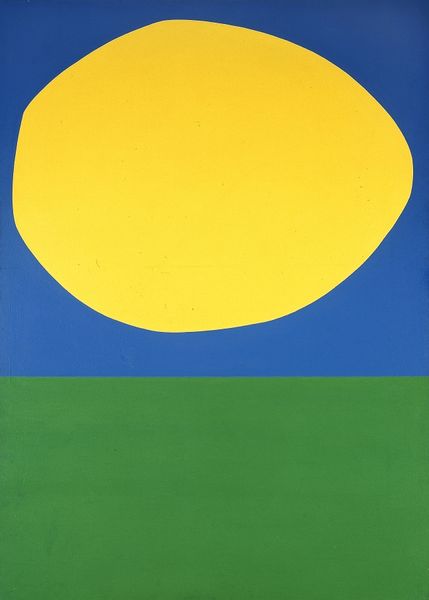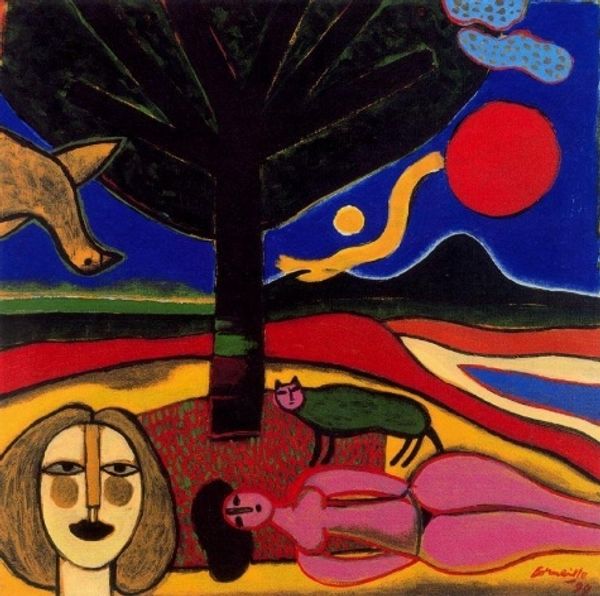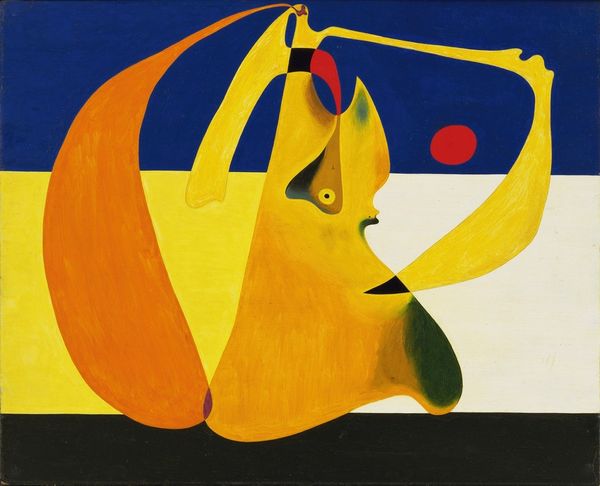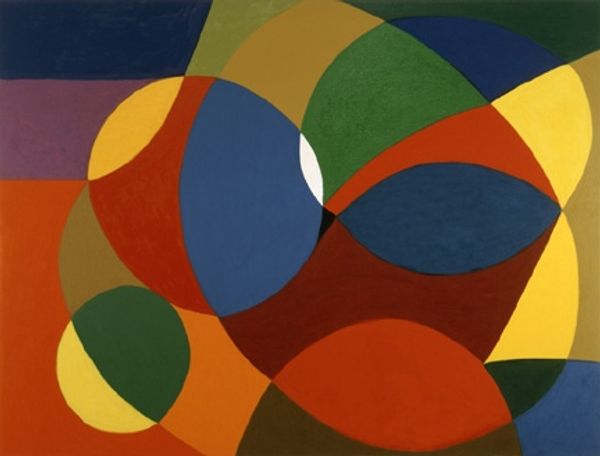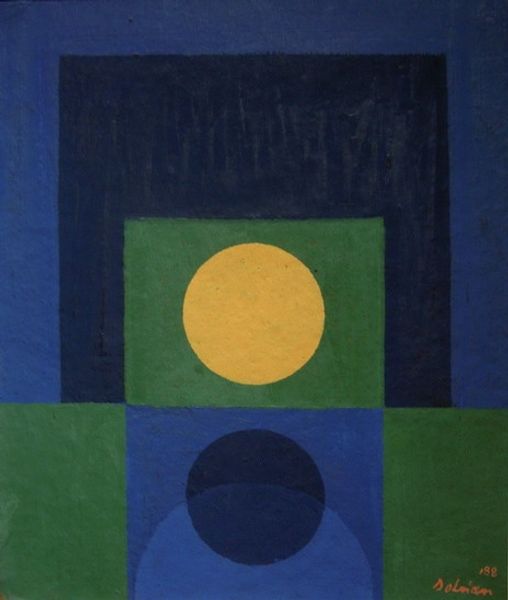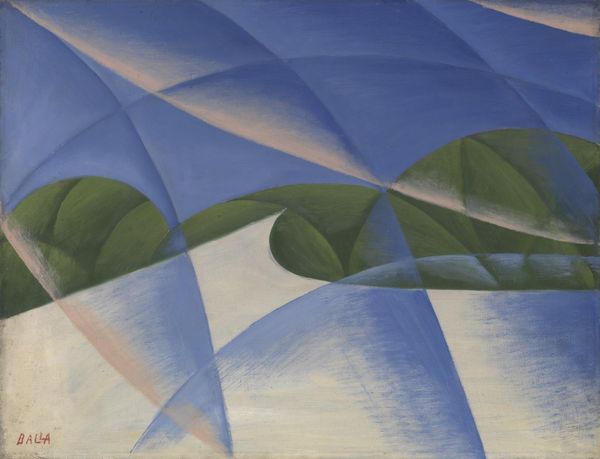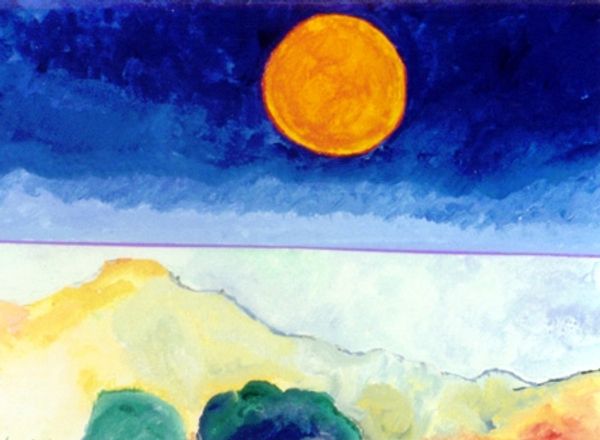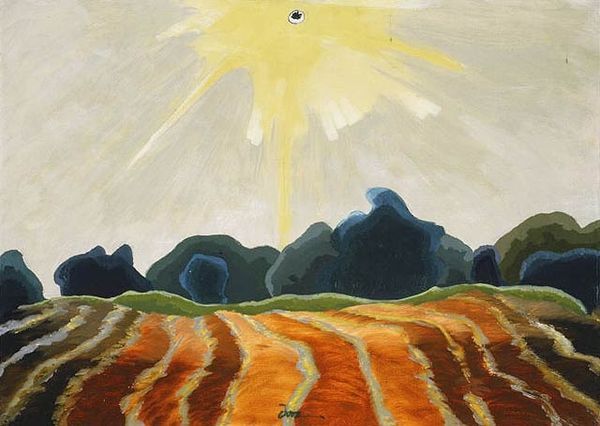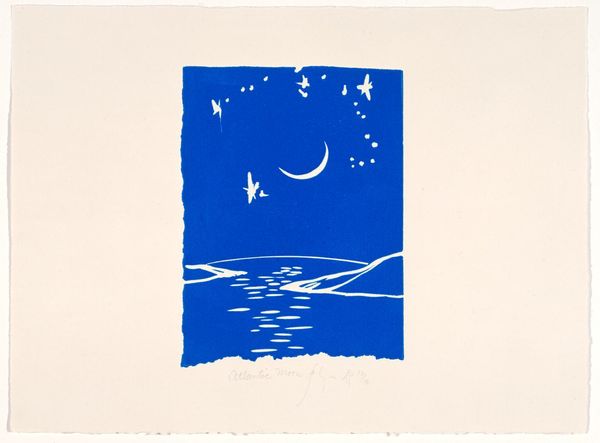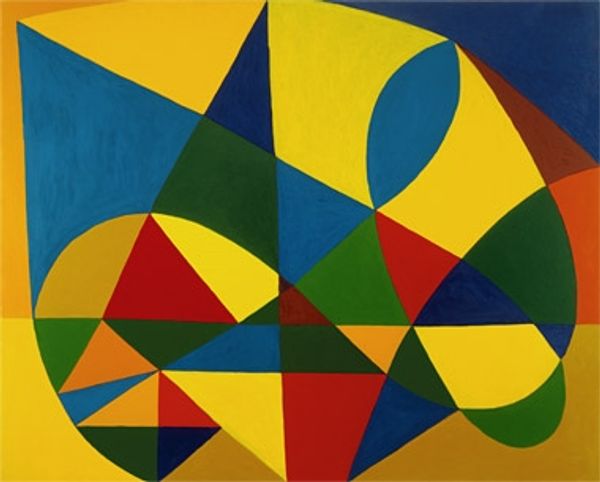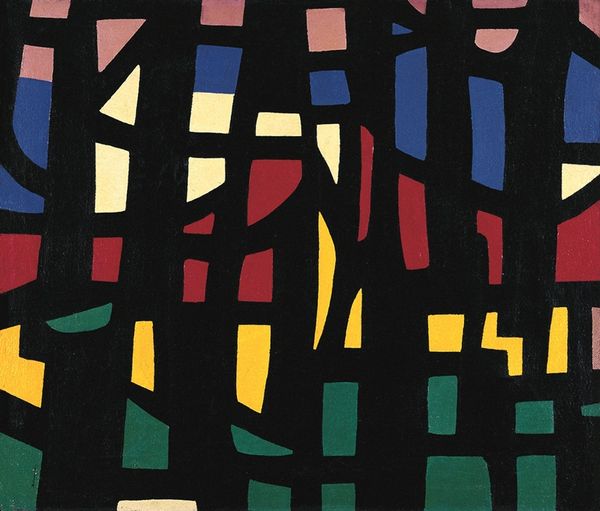
painting, oil-paint
#
painting
#
oil-paint
#
landscape
#
geometric
#
abstraction
#
modernism
Copyright: Tarsila do Amaral,Fair Use
Curator: Tarsila do Amaral's "The Moon," created in 1928 with oil on canvas, presents a compelling, abstracted landscape. Editor: The stark simplicity is arresting. There's an almost dreamlike quality. It feels very lonely, and oddly still. Curator: That stillness may reflect the modernist influence on Do Amaral's work, stripping away detail to focus on the essential forms. Note the geometric shapes: the curves of the moon and the water juxtaposed against the solid horizon and almost cartoonish cactus. These choices evoke an almost primal symbolic order. Editor: I find the simplification powerful. The tiny, dark green figure against that wide, undulating landscape…is it meant to evoke a feeling of Brazilian cultural identity through landscape, given Do Amaral’s importance within the Modernist movement in Brazil at this time? It feels like an embrace of national symbol in minimalist key, like a quiet act of asserting a modern aesthetic that acknowledges its roots. Curator: Absolutely. The painting came during a very important moment in Brazil’s history, marked by a search for national identity and a desire to break away from European artistic traditions. Do Amaral, having spent time in Europe, consciously synthesized modern techniques with Brazilian subjects, creating art that was both universal and distinctly Brazilian. "The Moon" itself has powerful feminine symbolism. Lunar images carry the archetype of mother, time, the ebb and flow. The feminine figure standing nearby brings these into conversation with landscape, history and time itself. Editor: It is remarkable how much can be communicated through suggestion, isn't it? By distilling the landscape, she amplifies the symbolism and feeling. Curator: Indeed, the piece prompts reflections on the land’s symbolism. A sense of profound stillness is embedded in those forms, it encourages us to contemplate the intersection of landscape, identity, and the power of visual shorthand. Editor: The legacy of this piece reminds me of art’s powerful public function – to distill identity into visible forms which a community can then explore, own, and ultimately remember.
Comments
No comments
Be the first to comment and join the conversation on the ultimate creative platform.
